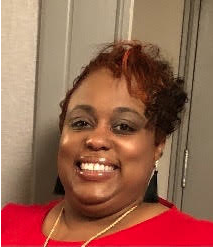In 2017, Children’s Hospital of Richmond (CHoR) at Virginia Commonwealth University took a huge jump in a new direction. Its CEO assembled 50 leaders from every unit and across disciplines to work on infusing a trauma-informed approach into its entire 182-bed hospital environment.

What sent them down this path was a fervent belief that something was missing in standard care. “Being admitted to the hospital can be traumatic enough, without even factoring in past [traumatic] experiences,” says Brittany Corker Kiefer, who now leads the Trauma-informed Leadership Team (TILT) that she joined at its inception. “We wanted to reduce and prevent re-traumatization.”
A trauma-informed approach includes understanding that trauma is widespread, cataloguing the behaviors that can be triggered by trauma, and responding in ways that can calm people and help them alter those behaviors. As Corker Kiefer explains, that basically means shifting the approach to patient care from ‘What’s wrong with you?” to “What happened to you?”
The shift was also sorely needed to support the hospital’s health care workers and staff. In January 2018, results from the hospital’s Professional Quality of Life (ProQOL) Scale, which measures levels of burnout and vicarious trauma among staff, showed surprisingly high scores. More nurses were calling in sick, and there was a lot of staff burnout and turnover. That led them to pilot in their Pediatric Intensive Care Unit a peer-support program originally developed for first responders, known as Stress First Aid at the beginning of 2018.
The team — which includes representatives from inpatient and outpatient care in nursing, social work, respiratory therapy, child life , physicians, psychology, psychiatry, occupational therapy, injury and violence prevention — began meeting monthly. Over the last three years, they’ve developed a basic training curriculum for all of the staff in trauma-informed care, which they’ll roll out in the coming months. They surveyed all the nurses in the Pediatric Intensive Care Unit for compassion fatigue and burnout and then used those results as a springboard for training a peer support team. They implemented ACEs screening of all of the patients who were admitted into the hospital, made physical changes to the hospital environment to enhance a feeling of safety and calm in the building, and they’ve created a sanctuary for staff on its bustling acute care pediatric unit.
The basic training they developed for trauma-informed care includes introducing staff to the Adverse Childhood Experiences Study (ACE Study), and explaining how traumatic stress affects the brain, body, behavior, health, mental health, and child development. It also explains how to recognize what in the hospital environment may trigger a trauma response as well as techniques to quiet down a triggered nervous system.
The landmark ACE Study, conducted by the Centers for Disease Control and Prevention/ Kaiser Permanente Adverse Childhood Experiences, linked 10 types of childhood trauma to the adult onset of many chronic diseases, mental illness, violence or being a victim of violence. The study, which looked at 17,000 adults, found that ACEs are remarkably common — most people have at least one. People who have four or more different types of ACEs — about 12 percent of the population — have a 1,200 percent higher risk of attempting suicide and a 700 percent higher risk of becoming an alcoholic, compared with people who have no ACEs. (ACEs Science 101; Got Your ACE/Resilience Score?)
The epidemiology of childhood adversity is one of five parts of ACEs science, which also includes how toxic stress from ACEs affects children’s brains, the short- and long-term health effects of toxic stress, how toxic stress is passed on from generation to generation, and research on resilience, which includes how individuals, organizations, systems and communities can integrate ACEs science to solve our most intractable problems.
In tackling staff burnout through the Stress First Aid pilot, ChoR was putting ACEs science into action. Fifteen peer mentors, all nurses in the pediatric intensive care unit, took a four-hour training, which included learning to recognize when their colleagues were showing signs of stress and developing techniques to help them mitigate that stress.
Corker Kiefer, who’s a social worker in the pediatric intensive care unit and acute care, is one of the peer-support mentors who went through the training. She says she now has her radar up for signs of stress in her colleagues. “Maybe they’re becoming more frustrated or upset after an interaction than they typically would, or they’re working too many hours,” she says.
When a colleague seems anxious, or irritable, or drained, she has a number of suggestions. “I’ll say things like, ‘Hey let me take your phone,’ or ‘I’ll watch your patient; take a break, use the bathroom, get some water,’ or, ‘Let me do that assessment for you, I know you have a lot going on.’” To prevent nurses from feeling “singled out” when a peer mentor approaches, Corker Kiefer and her colleagues held Facebook live discussions and talked about the peer support program at staff meetings. Their message: “If you get pulled aside, or if someone comes up and asks you how you’re doing, that’s the new norm.”
Six months after the training, they surveyed the pilot participants using the ProQOL and found that the nurses were feeling much better, with reductions in turnover, sick time and burnout. “It seems that staff are happier, ready to start and finish their day at 110%. And if they’re stressed or down, they know they have coworkers and other staff who are there to support them and help them get through the day,” says Corker Kiefer. (Specific data will be available once their results are published.)
Because of its success, the Stress First Aid peer support program has now been rolled out in the Burn, Labor and Delivery, and Transition Care Units, the NICU, and in all pastoral care (religious and spiritual support).
Stress First Aid’s principles and techniques have been especially helpful during the COVID 19 pandemic, says Melissa Seventko, a bedside nurse and peer support member who works on the general pediatric unit which has high patient turnover. She says that the stress caused from having to navigate constant changes — everything from visitor policies, to the lack of personal protective equipment — cause stress for nurses.

“So just allowing people to express their thoughts and feel like they’re being heard has been one of the best things we can do for nurses during COVID,” she says.
Seventko, too, has found solace in the response she received from other members of the peer support team after one of her patients died. “Multiple people reached out to me to make sure that I was okay,” she says. “Even things like going back in that same room where the patient died when there’s a new patient, you don’t know how it’s going to affect you until you experience it. Just being able to talk and hear others’ perspectives was very, very helpful, and knowing that it's okay to not be okay for a while.”
Another group from TILT is charged with coming up with tangible items that will make patients, their families and staff feel cared for. That includes giving out welcome bags with shampoo and conditioners to families, providing weighted blankets for patients, and having a lavender cart that migrates among the nurses’ lounge, the staff member office and a room that pediatric acute care nurses go to decompress. The cart contains a variety of stress-busting sensory tools, such as stress balls, essential oils, snacks and water, and coloring pencils and paper.
That same group, the TILT subcommittee known as the Safe Environment of Care, also transformed walls on the hospital’s pediatric acute care and intensive care units, covering them with painted images of giraffes, birds, elephants and other wildlife. “Children really like that,” says Corker Kiefer. “It seems a little more kid-friendly and trauma-informed to have that instead of blank white walls.”
Andrea Chambliss, the interim nurse clinician on the Pediatric Acute Care Unit, created an adult version of a calming environment on the Pediatric Acute Care unit, which the nurses term their Oasis room.

“I love decorating and I made it like a spa,” says Chambliss. It has a massage chair (where a contracted masseur provides 10-minute massages), a recliner, essential oils, like lavender and eucalyptus, rolled up towels, a photo of the ocean, dim lights, and soft music. Chambliss says between 75 to 100 people sign up weekly to use it in 30-minute slots, and it seems to be making a difference for them.
“They’re very appreciative. They say it allows them to relax, use it as a getaway to just regroup,” she says.
TILT also set up a program based on feedback from families. “We found that parents and family don’t want to leave the bedside [of their child], and a lot of them are not getting lunch or other meals,” says Corker Kiefer. So, the hospital brought in volunteers from the Ronald McDonald house to visit rooms to offer meals, snacks, coffee and other soft drinks. She says the cart also helped ease stress around any potential financial burden for families. “Eating in the hospital is not cheap, especially for families that are here for a long time.”
Based on feedback from families, they’re also planning on having more private rooms for families in a new hospital facility that’s under construction. That will allow more sensitive conversations to occur at their child’s bedside instead of having to walk out to a separate room. A private room can also make a child feel more secure and less trapped. “It allows patients to have a clear view of the exit,” Corker Kiefer says.
The TILT team is also working on developing a tool to screen patients for post-traumatic stress disorder on admission and again a month after they’ve been discharged.
Screening for trauma is not new at CHoR, however. Since 2017 Corker Kiefer and the other hospital social workers have screened their young patients for ACEs who are admitted to the hospital for ongoing care. She says it helps identify the support the child and family need.
“The results from the ACEs screening help me advocate for the patient and family and make the entire care team aware of the traumas that the patient and families have lived through, and reduce the possibility of retraumatizing them,” she explains.
Corker Kiefer and her colleagues also have plans to develop advanced training in trauma-informed practices and to expand the peer mentorship program to other units. When Corker looks back at the work they’ve done, one important lesson stands out: It’s that trauma-informed approach is not a one-size-fits-all practice.
“You can’t make assumptions about how a patient, family or staff member is going to respond to trauma,” she says. “We need to be adaptive to what’s going on with them so we can provide the best care.”




Comments (0)